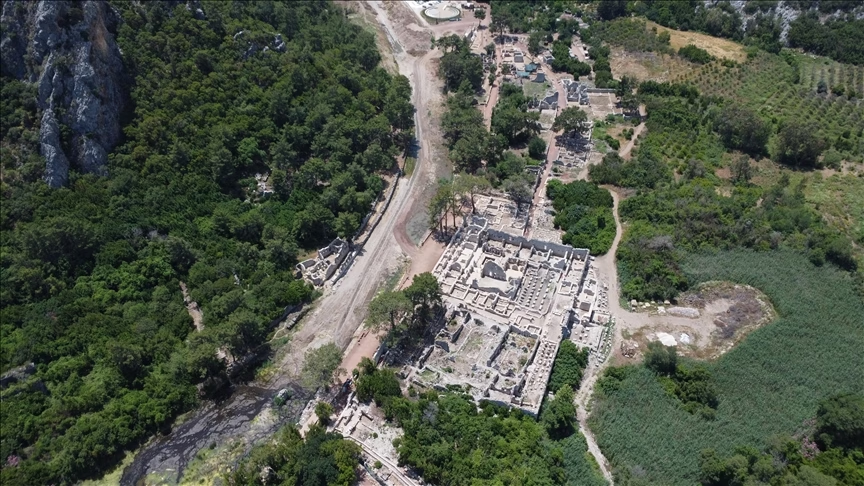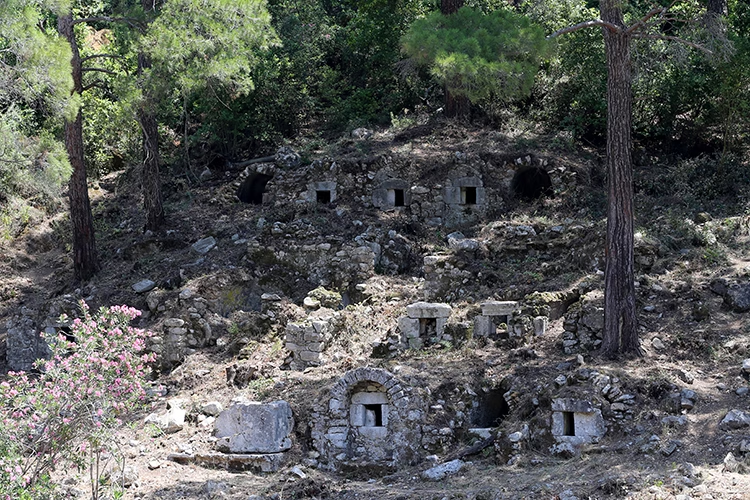One of Turkey’s most captivating archaeological sites, Olympos Ancient City, is offering history enthusiasts a brand new discovery this year. Nestled in Antalya’s Kumluca district, the city has recently unveiled Roman-era rock-cut tombs that had remained hidden under dense vegetation for centuries. Following extensive archaeological excavation and clearing efforts, these tombs are now open to visitors for the first time.
From Lycia to Rome
Originally rising to prominence in the 2nd century BCE as a key member of the Lycian League, Olympos experienced periods of turmoil, including pirate invasions, before being annexed and rebuilt by the Roman Empire. The city stands out for its unique urban layout—spread between a coastal harbor and a riverside settlement. Over time, it became a living archive of ancient history, preserving remnants from the Roman, Byzantine, and early Christian periods.

Ancient Silence Hidden in the Southern Hillside
Thanks to year-round excavations supported by the Turkish Ministry of Culture and Tourism, Olympos has been revitalized in recent years. During the 2024 excavation season, archaeologists uncovered a necropolis area on the southern slopes of the city that had been inaccessible due to thick pine and laurel forests.

Assoc. Prof. Dr. Gökçen Kurtuluş Öztaşkın, excavation director and faculty member at Pamukkale University’s Faculty of Humanities and Social Sciences, shared insights on the discovery:
“Through extensive vegetation clearing this year, we revealed vaulted burial chambers built along the slope. The site stretches over 400 meters and encompasses a sizable necropolis.”
The excavation team not only exposed the structures physically but also began detailed documentation and epigraphic studies of the tombs. These efforts are shedding light on the social fabric of ancient Olympos, as graves of both elite families and individuals from lower social strata—including slaves and Roman soldiers—are being recorded.
“So far, we have identified over 270 tombs in the southern necropolis. Among them are burials of high-status individuals as well as people from various social classes. This offers us valuable insight into the demographic diversity of ancient Olympos.” – Assoc. Prof. Öztaşkın

A New Way to Walk Through History
This year, a network of walking paths has been added to make the tomb area accessible to visitors. These newly established trails allow visitors to explore the necropolis on foot, observing rock-cut tombs and sarcophagi up close in their original setting.

With this addition, Olympos is evolving beyond its image as a coastal and harbor destination. Visitors now have the opportunity to engage more deeply with the city’s funerary traditions and urban identity, immersing themselves in the layered history of this ancient Lycian-Roman settlement.
Cover Photo: Fatih Hepokur/AA




